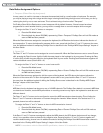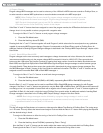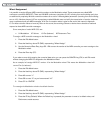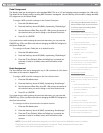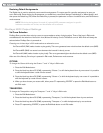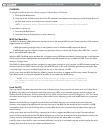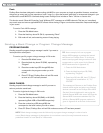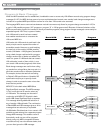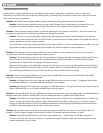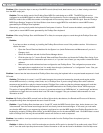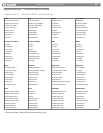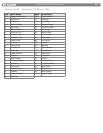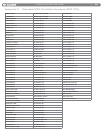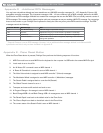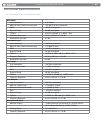
|
40
ProKeys Sono 88 User Guide
You will find many MIDI devices respond to program change commands and many are organized according to the GM listing. In
General MIDI devices, different sounds are organized in the same way from device to device. Piano sounds are in their particular
place, string sounds are in their place, drum sounds are in their place, and so on. All GM devices (both hardware and software
sound modules) are clearly labeled as such, so you know that their sounds are organized in the General MIDI structure. When a
GM device receives a MIDI program change, it calls up a type of sound that you expect from the GM sound set. All non-GM MIDI
sound modules call up unique sounds from their memory upon receiving MIDI program changes. Since the sounds in a non-GM
device are not arranged in a particular order, you need to take a look at the device itself to see which sound you want and at which
location in the memory it resides. Many VST instruments such as Native Instruments’ FM7 or the synth modules in Propellerhead
Reason are non-GM devices.
You can send Program Change, Bank LSB and Bank MSB messages directly from the ProKeys Sono keyboard. Please consult
the “Advanced ProKeys Sono Functions in Edit Mode“ section of this User Guide for further details.
NRPN/RPNs
Non-registered parameter numbers (NRPN’s) are device-specific messages that enable you to control synthesizers and sound
modules via MIDI. The MIDI specification defines open parameter numbers to allow manufacturers to specify their own controllers.
The more common of these are registered by the MIDI Manufacturer’s Association and are now part of the MIDI specification,
hence the term Registered Parameter Numbers – RPN’s (See Appendix C). Each NRPN/RPN has an associated 2-byte number.
The two bytes allow for 128 values each. (An RPN or NRPN message is made up of two parts: the MSB and the LSB message.
Both of these messages together constitute an RPN or NRPN command.) This allows for 16,384 values in total.
MIDI controllers 98 and 99 represent the NRPN LSB and MSB respectively, while 100 and 101 represent the RPN LSB
and MSB messages (see the MIDI controllers list in Appendix C). To transmit an NRPN/RPN message, these LSB and MSB
controller messages are sent along with their user-specified values. A further controller message and value needs to be sent
to specify the (coarse or fine) value adjustment. This is specified by controller number 6 (data entry) for coarse adjustments or
number 38 for fine adjustments.
A list of NRPN’s is usually given in the user’s manual of any device that receives NRPN messages. It is always necessary that the
NRPN MSB and LSB be sent together. Both will be specified in the device’s manual.



